There are several variables that can affect whether your pizza turns out well or poorly when it comes to cooking it. How you layer your pizza toppings is one of the most crucial elements.
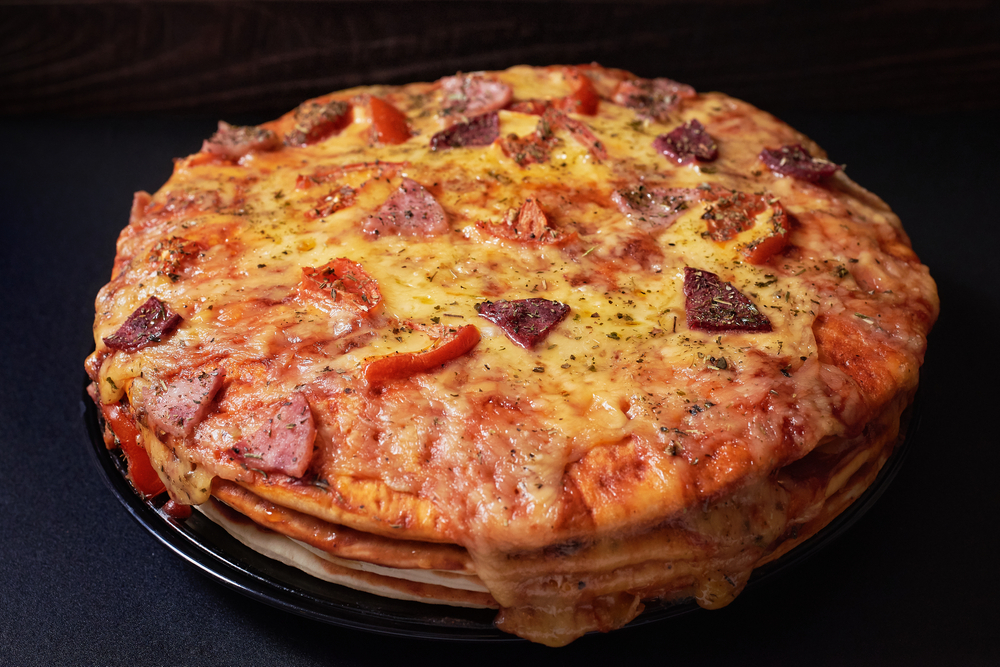
When it comes to the flavor and texture of your pizza, properly layering your toppings may make a huge difference.
The method of layering a pizza might appear simple at first. However, there are a few techniques that can help you consistently make the ideal pizza.
For instance, did you know that it’s better to put the toppings on last and work your way up to the sauce, cheese, and then toppings? By doing this, you can make sure that your toppings cook uniformly and don’t burn or dry out.
Additionally, you should be careful not to use too many toppings, as this can result in a soggy crust. With these pointers in mind, we’ll walk you step-by-step through the process of layering a pizza so you may wow your loved ones with your pizza-making prowess.
Pizza Layering Basics
When it comes to making the perfect pizza, layering is an art form. Proper layering techniques are essential to achieving the right balance of flavors, textures, and visual appeal.
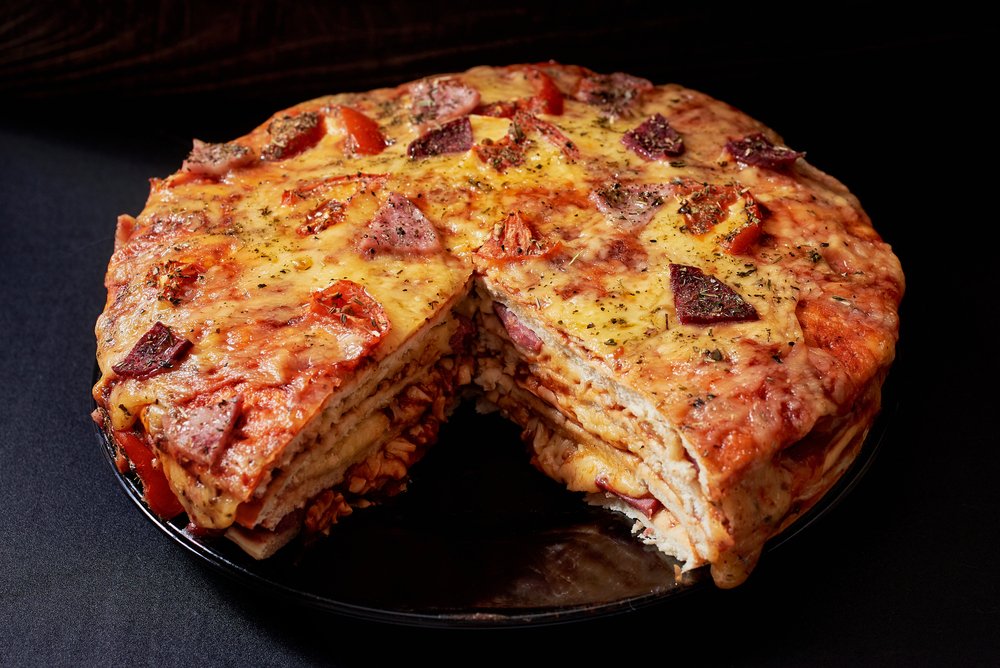
Let’s discuss why layering matters and some basic layering techniques to help you create the perfect pizza.
Why Layering Matters
Layering is not just about making your pizza look pretty; it’s also about creating a balanced flavor profile. Each layer of toppings should complement the others, creating a harmonious blend of flavors.
Layering also helps to distribute toppings evenly, ensuring that each bite has a little bit of everything, layering also affects the texture of your pizza. For example, if you layer too many wet toppings on top of each other, you run the risk of ending up with a soggy pizza.
On the other hand, if you layer too many dry toppings, your pizza may end up too dry.
Layering Techniques
Here are some basic layering techniques to help you create the perfect pizza:
- Start with the sauce: Spread a thin layer of sauce evenly over the pizza dough, leaving a little bit of space around the edges for the crust to rise.
- Add the cheese: Sprinkle a generous layer of cheese over the sauce. Use a combination of different types of cheese for added flavor and texture.
- Layer the toppings: Add your desired toppings, starting with the driest ones first. For example, if you’re using mushrooms and peppers, add the mushrooms first, followed by the peppers. This will help to prevent the pizza from becoming too soggy.
- Finish with the garnishes: Once your pizza is fully layered, add any garnishes you like, such as fresh herbs or grated Parmesan cheese.
Remember that less is often more when it comes to pizza toppings. Overloading your pizza with too many toppings can lead to a soggy, unappetizing mess. Instead, focus on creating a few well-balanced layers that will enhance the flavor and texture of your pizza.
Pizza layering is an art that takes practice to master. By following these basic layering techniques, you can create a delicious and visually appealing pizza that will impress your friends and family.
Preparing Your Pizza
When it comes to making a delicious pizza, preparation is key. In this section, we’ll cover everything you need to know about preparing your pizza, from choosing your ingredients to making your pizza dough.
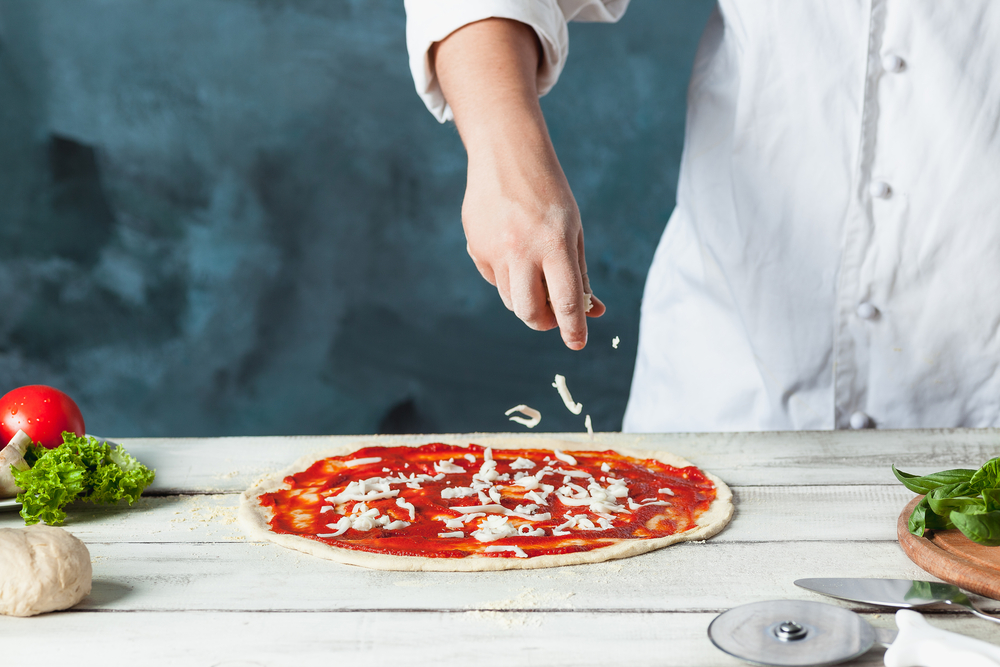
Choosing Your Ingredients
The first step in preparing your pizza is choosing your ingredients. When it comes to toppings, the possibilities are endless. Some popular options include pepperoni, sausage, bacon, chicken, mushrooms, onions, peppers, olives, pineapple, and more.
When selecting your toppings, it’s important to consider their weight and moisture content. Heavier toppings like meats and vegetables should be placed on top of lighter toppings like cheese to prevent them from sinking into the crust.
In addition to toppings, you’ll also need to choose your pizza sauce and cheese. Tomato sauce is a classic choice, but you can also use pesto or even barbecue sauce for a unique twist.
Mozzarella is the most common cheese used on pizza, but you can also use cheddar, parmesan, or goat cheese for added flavor.
Preparing Your Toppings
Before you start assembling your pizza, you’ll need to prepare your toppings. This may involve slicing vegetables, cooking meats, or shredding cheese.
It’s important to ensure that your toppings are evenly sized and cooked to the appropriate temperature to ensure that they cook properly on your pizza.
Making Your Pizza Dough
If you’re making your own pizza dough, you’ll need to mix flour, yeast, salt, sugar, and water together until a smooth dough forms. Knead the dough for several minutes, then let it rise for at least an hour before shaping it into a crust.
If you’re using store-bought dough, simply follow the instructions on the package to prepare it for use.
Choosing Your Pizza Sauce
When it comes to pizza sauce, you have a few options. You can use a classic tomato sauce, a tangy marinara sauce, or even a creamy white sauce.
If you’re feeling adventurous, you can even make your own pizza sauce using fresh herbs and spices.
No matter what type of sauce you choose, be sure to spread it evenly over your prepared pizza crust to ensure that every bite is delicious.
By following these tips for preparing your pizza, you’ll be well on your way to creating a delicious and satisfying meal.
Layering Your Pizza
When it comes to making the perfect pizza, layering your toppings is key. In this section, we’ll cover the proper layering order, how to choose the right cheese and tips for adding your toppings.
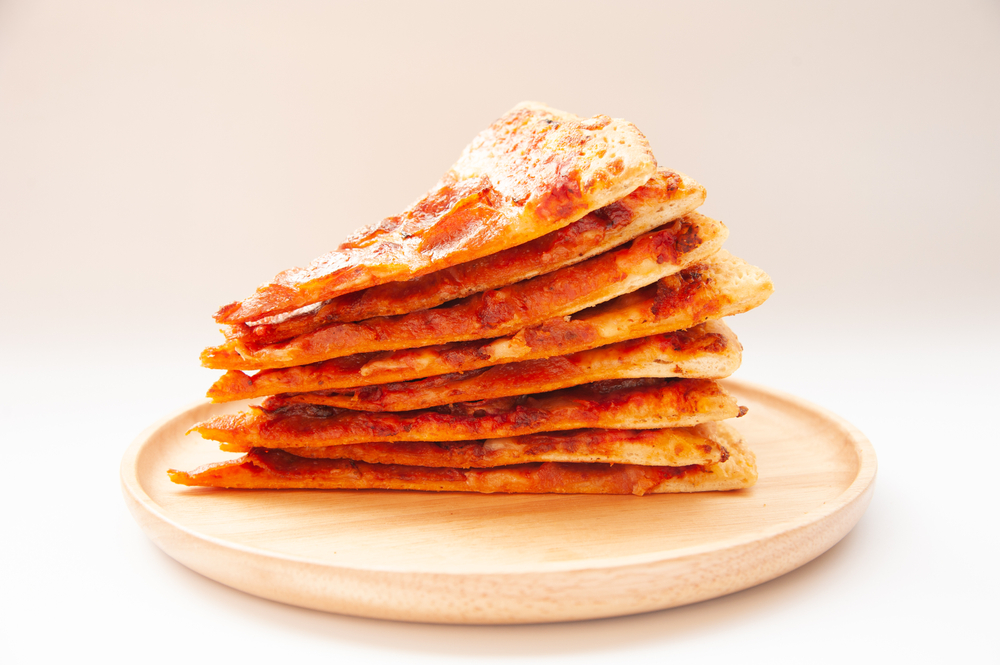
Layering Order
The order in which you layer your toppings can greatly affect the flavor and texture of your pizza. Here’s the proper layering order to follow:
- Sauce: Spread a layer of tomato sauce or marinara sauce evenly over the pizza crust. If you prefer a tangy flavor, try adding a layer of pesto or olive oil instead.
- Cheese: Sprinkle a layer of shredded mozzarella cheese over the sauce. For added flavor, mix in some parmesan cheese or sliced fresh mozzarella.
- Meat: Add your meat toppings, such as pepperoni, sausage, or bacon. If using raw meat, be sure to cook it first before adding it to the pizza.
- Vegetables: Layer your veggies, such as onions, peppers, mushrooms, and olives. For a sweeter taste, try adding pineapple or apple slices.
- Garnishes: Top your pizza off with fresh herbs, such as basil or oregano, and a drizzle of olive oil.
Choosing Your Cheese
Choosing the right cheese is important for achieving the perfect pizza flavor and texture. Here are some popular cheese options to consider:
- Mozzarella: This is the most common cheese used for pizza. It has a mild flavor and melts well.
- Cheddar: Cheddar cheese has a sharper flavor and adds a nice kick to your pizza.
- Goat Cheese: This tangy cheese pairs well with vegetables and adds a unique flavor to your pizza.
- Parmesan: Sprinkle some parmesan cheese on top of your pizza for added flavor.
Adding Your Toppings
When it comes to adding your toppings, it’s important to not overdo it. Here are some tips for adding your toppings:
- Don’t add too many toppings, as this can result in a soggy pizza.
- Heavier toppings, such as meat and vegetables, should be added toward the center of the pizza to prevent the crust from becoming too soggy.
- For a crispy crust, preheat your oven or pizza stone before baking.
- If using store-bought dough, be sure to follow the instructions on the package for the best results.
- For a Neapolitan-style pizza, use fresh ingredients and a thin crust.
With these tips, you’ll be able to create the perfect layered pizza right at home. Happy baking!
Cooking Your Pizza
Cooking your pizza is the final step in the process of making a delicious homemade pizza. In this section, we will discuss the different methods of cooking your pizza, as well as the steps you should take to ensure your pizza comes out perfectly every time.
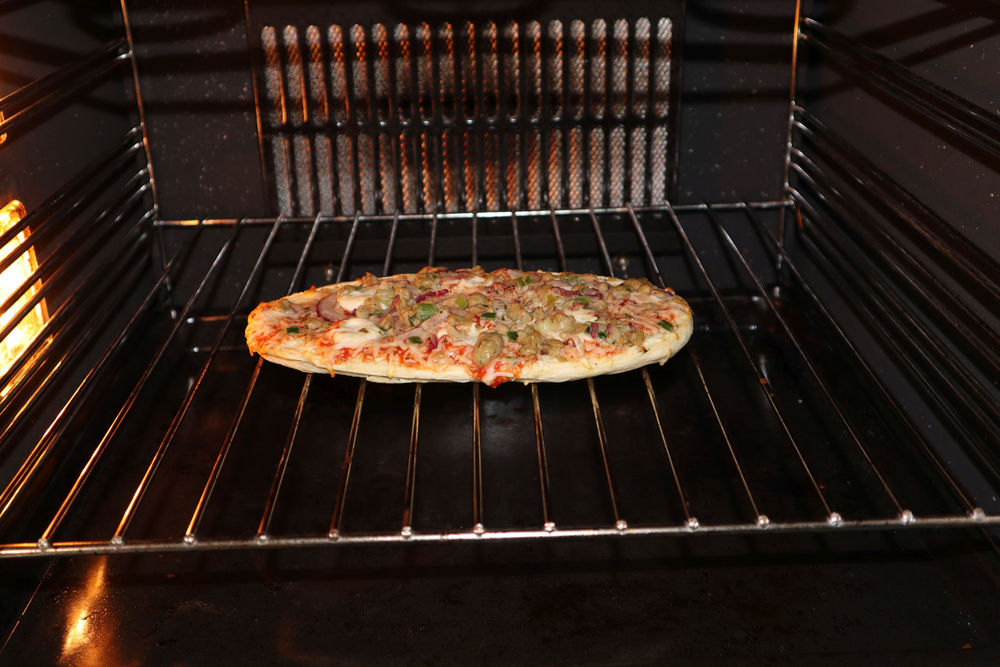
Choosing Your Cooking Method
There are several ways to cook a pizza, each with its own unique benefits. The most common methods are baking in an oven, grilling, or using a pizza stone.
Baking in an oven is the most popular method, and it allows for the most control over the cooking process.
Grilling your pizza can add a smoky flavor to your pizza while using a pizza stone can give your crust a crispy texture.
Preheating Your Oven
Before you begin cooking your pizza, it’s important to preheat your oven to the appropriate temperature.
The ideal temperature for cooking pizza is 425-450°F. If you’re using a pizza stone, it’s important to preheat the stone in the oven for at least 30 minutes before cooking your pizza.
Baking Your Pizza
When it comes to baking your pizza, there are a few things to keep in mind. First, make sure to assemble your pizza with the toppings in the correct order.
Start with the sauce, followed by any meats or veggies, and finish with the cheese. This will ensure that your toppings cook evenly and that the cheese melts properly.
If you’re using a store-bought pizza crust, follow the instructions on the packaging for baking. If you’re making your own pizza dough, bake the pizza for 10-12 minutes or until the crust is crispy and golden brown.
If you’re using raw meat as a topping, make sure it’s cooked thoroughly before adding it to the pizza.
It’s also important to consider the weight of your toppings. Heavier toppings like meats and veggies should be placed closer to the center of the pizza, while lighter toppings like garlic and tomatoes can be spread out more evenly.
Finally, when your pizza is finished baking, let it cool for a few minutes before slicing and serving. This will allow the cheese to set and prevent the toppings from sliding off.
Cooking a homemade pizza is a fun and rewarding experience. With the right ingredients and cooking methods, you can create a delicious pizza that rivals your favorite pizzeria.
Common Pizza Layering Mistakes
When it comes to making a delicious pizza, the layering of ingredients is crucial. However, there are some common mistakes that can ruin your pizza. In this section, we will discuss some of the most common pizza layering mistakes and how to avoid them.
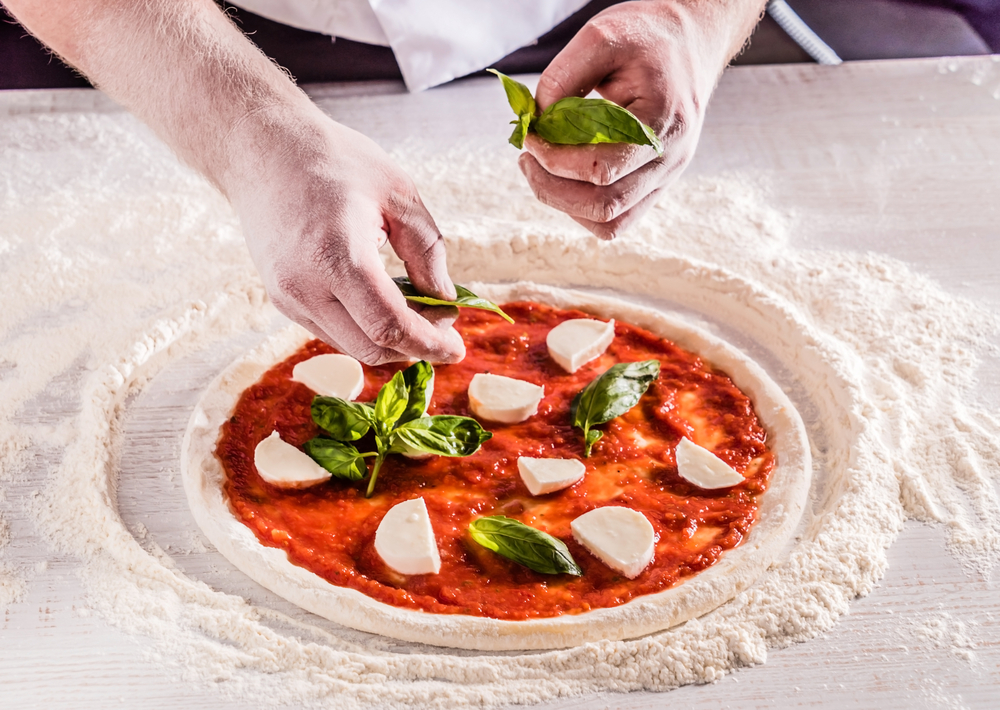
Too Much Sauce
One of the most common mistakes is using too much sauce. While sauce is an essential ingredient, too much of it can make the pizza soggy and ruin the texture.
We recommend using a thin layer of sauce and spreading it evenly over the crust. This will ensure that the pizza does not become too soggy and that the other ingredients can shine through.
Incorrect Cheese Layering
Another common mistake is layering the cheese incorrectly. Some people put the cheese on top of the toppings, but this can cause the toppings to fall off when you take a bite.
We suggest putting the cheese on top of the sauce and toppings. This will help hold everything together and create a delicious, gooey layer on top of the pizza.
Overloading Toppings
Although it may be tempting to smother the pizza in toppings, doing so can make it mushy and challenging to eat.
We advise using a reasonable quantity of toppings and distributing them evenly on the pizza. This will guarantee that the flavors and textures in each bite are well-balanced.
Ignoring the Order of Ingredients
The order in which you layer the ingredients is also important. Starting with the sauce, followed by cheese, and then toppings is the most common order. However, some toppings, such as vegetables, should be placed on top of the cheese to prevent them from becoming too dry.
It’s essential to pay attention to the order of ingredients to ensure that each layer complements the others and creates a delicious pizza.
Pizza layering is an art form that requires attention to detail and a good sense of balance. By avoiding these common mistakes, you can create a delicious pizza that everyone will love.

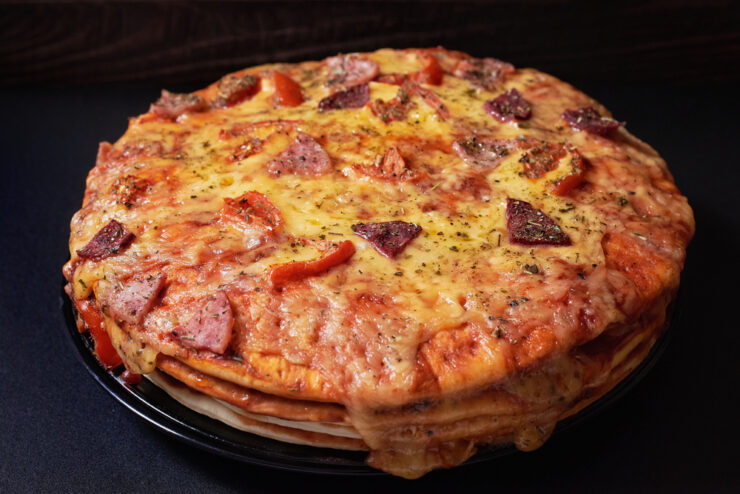






Add comment